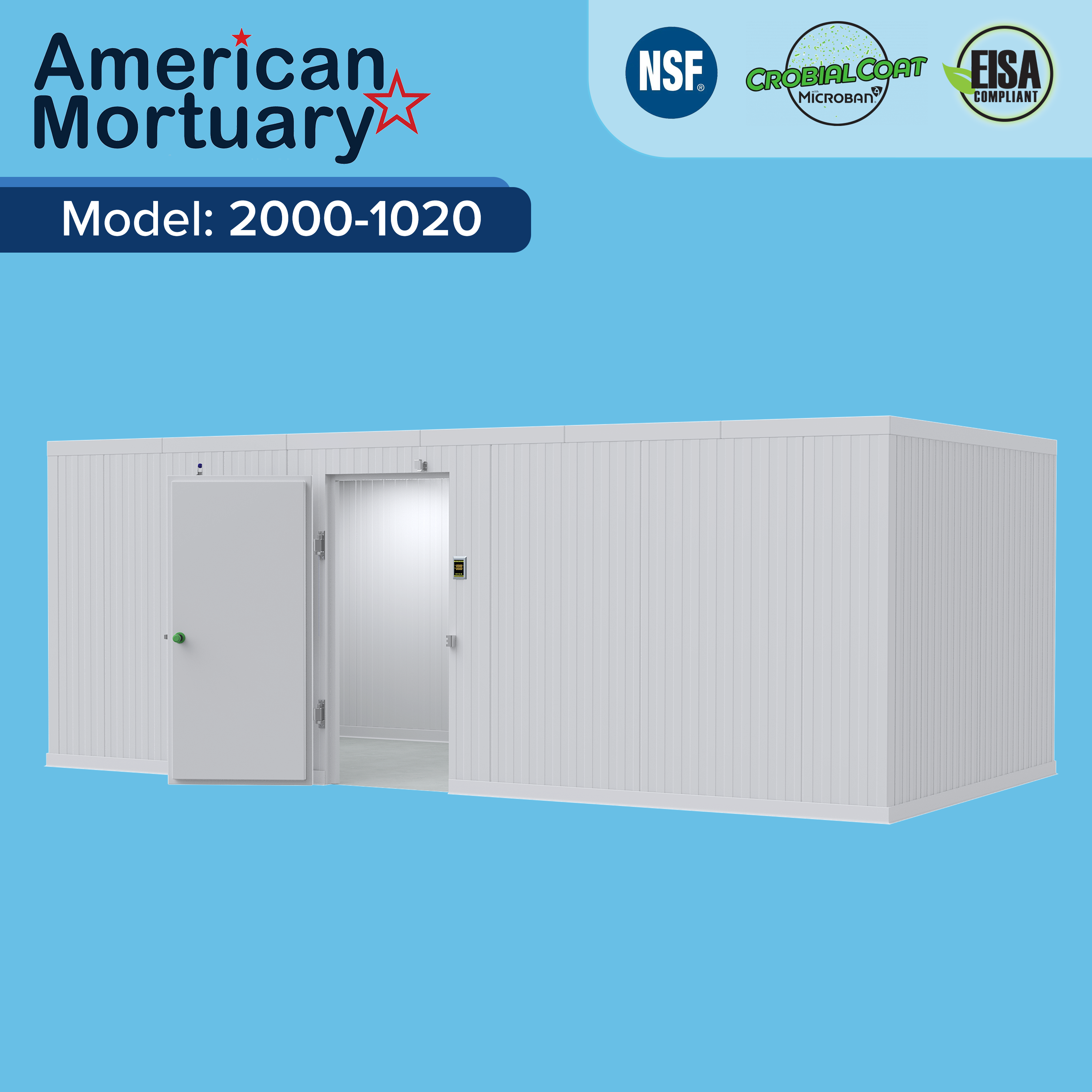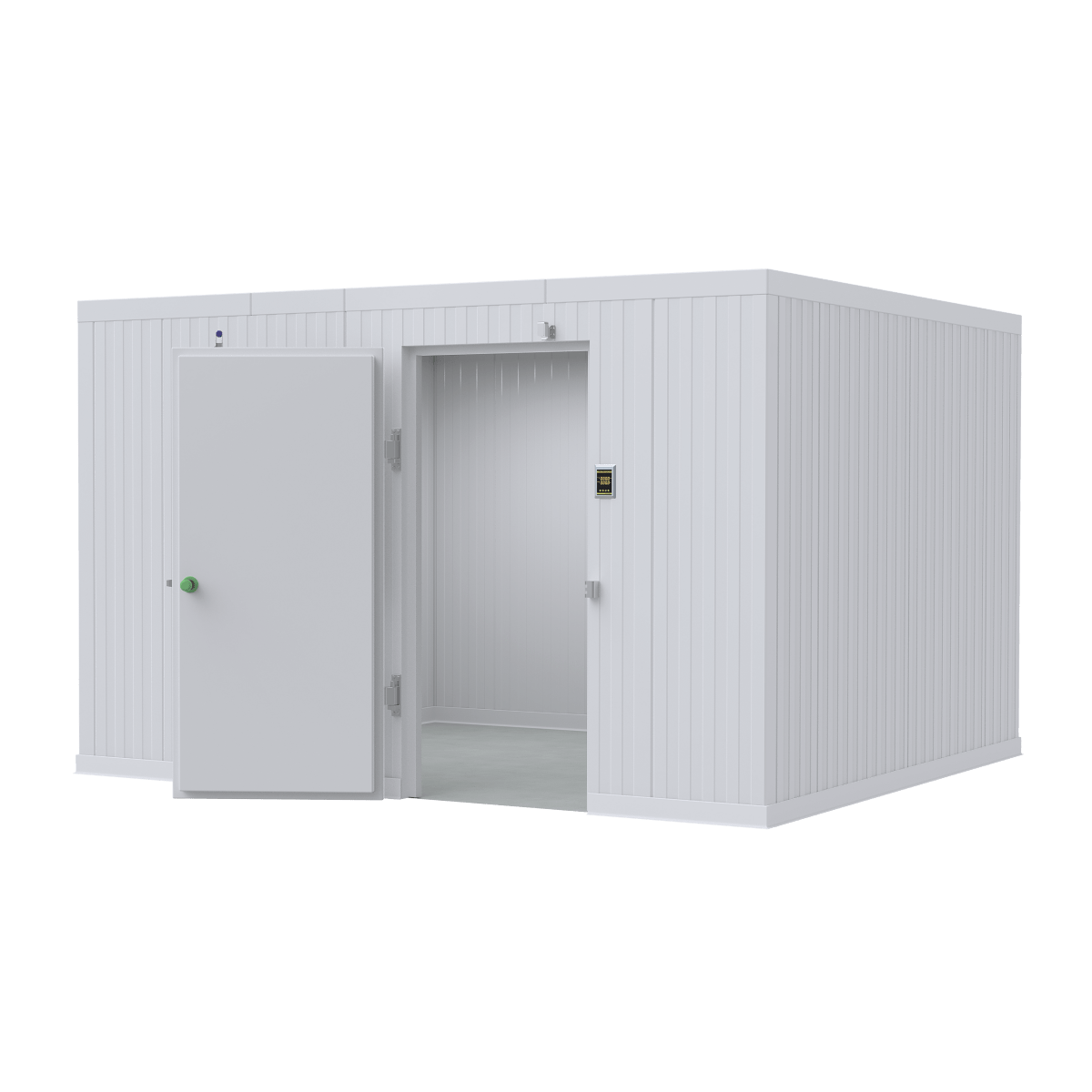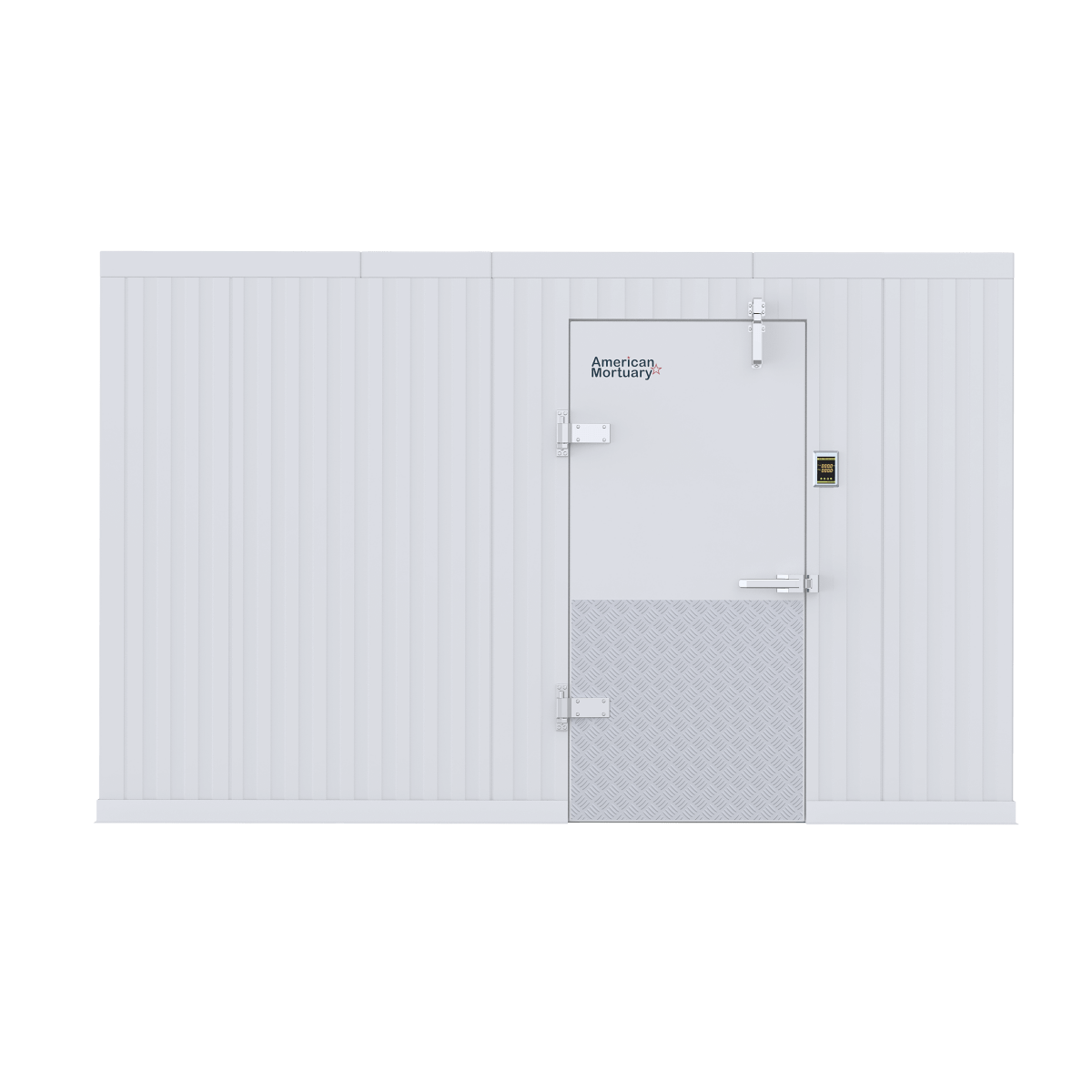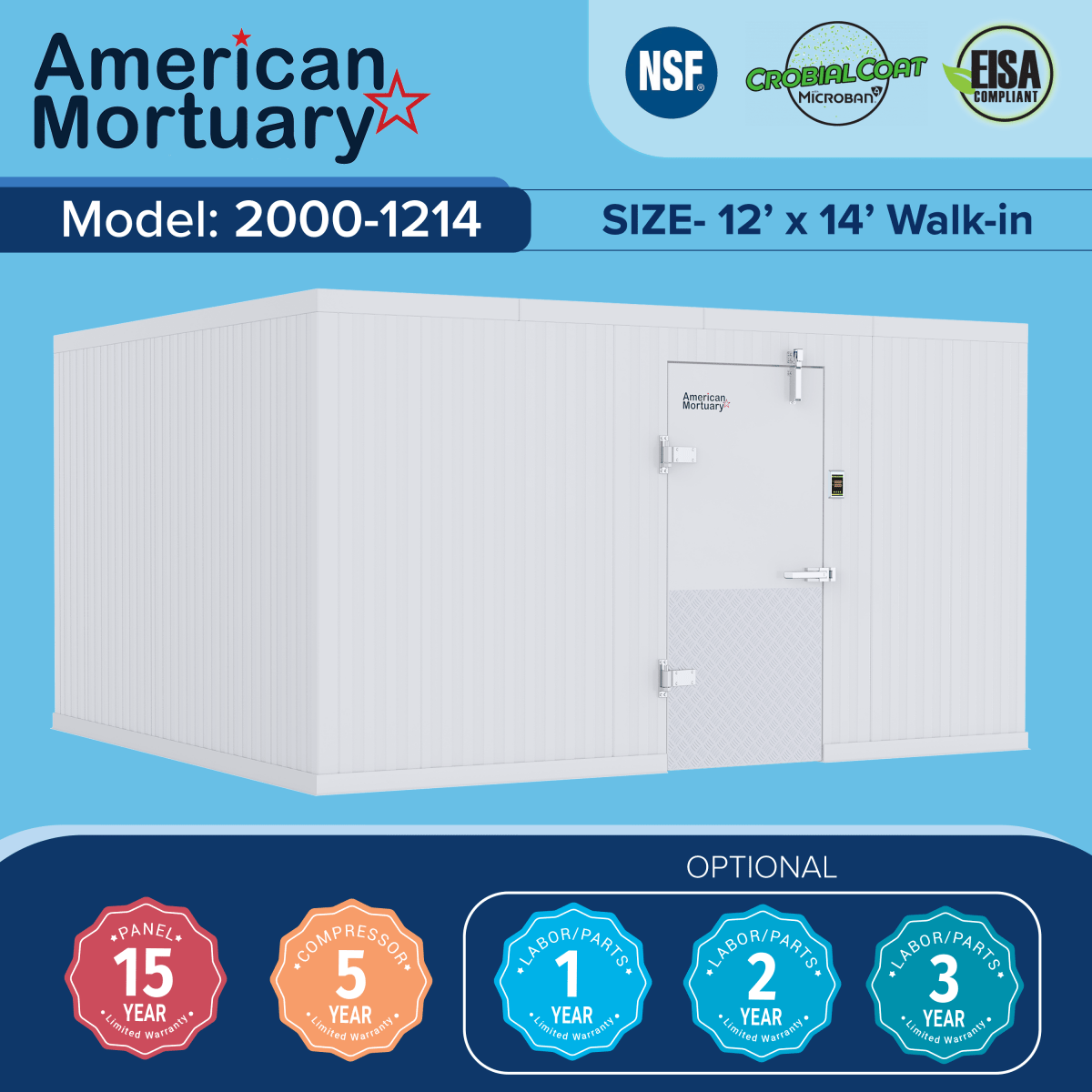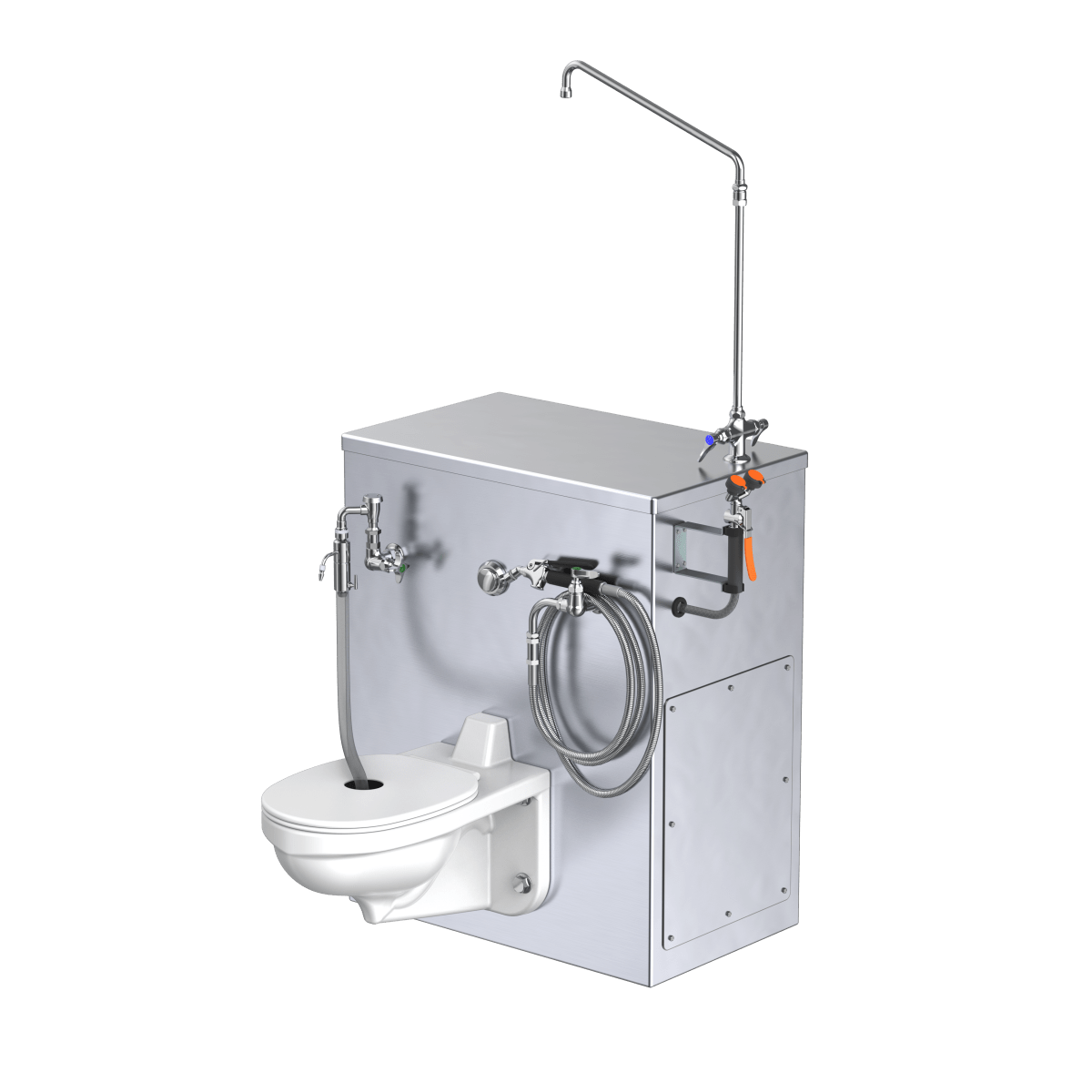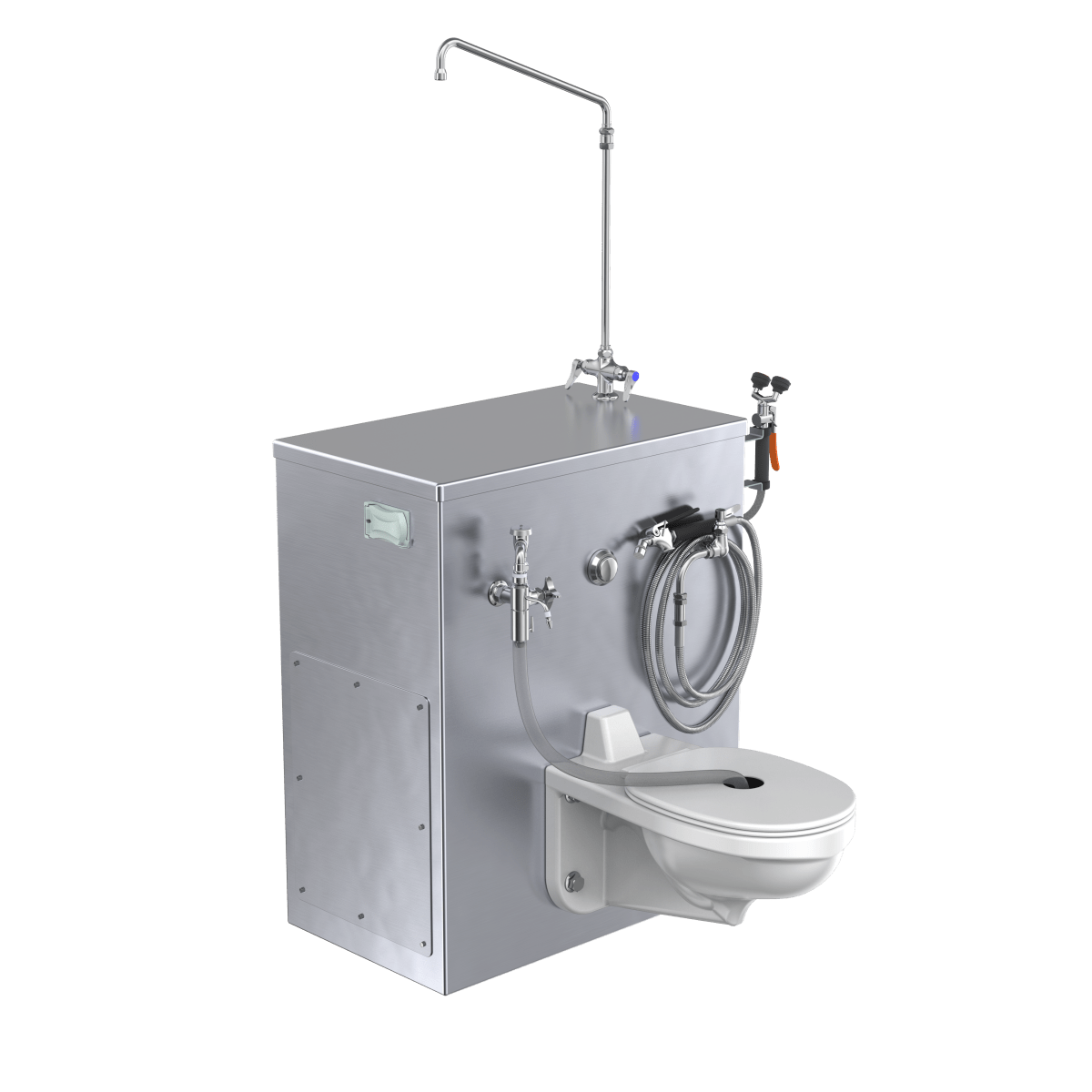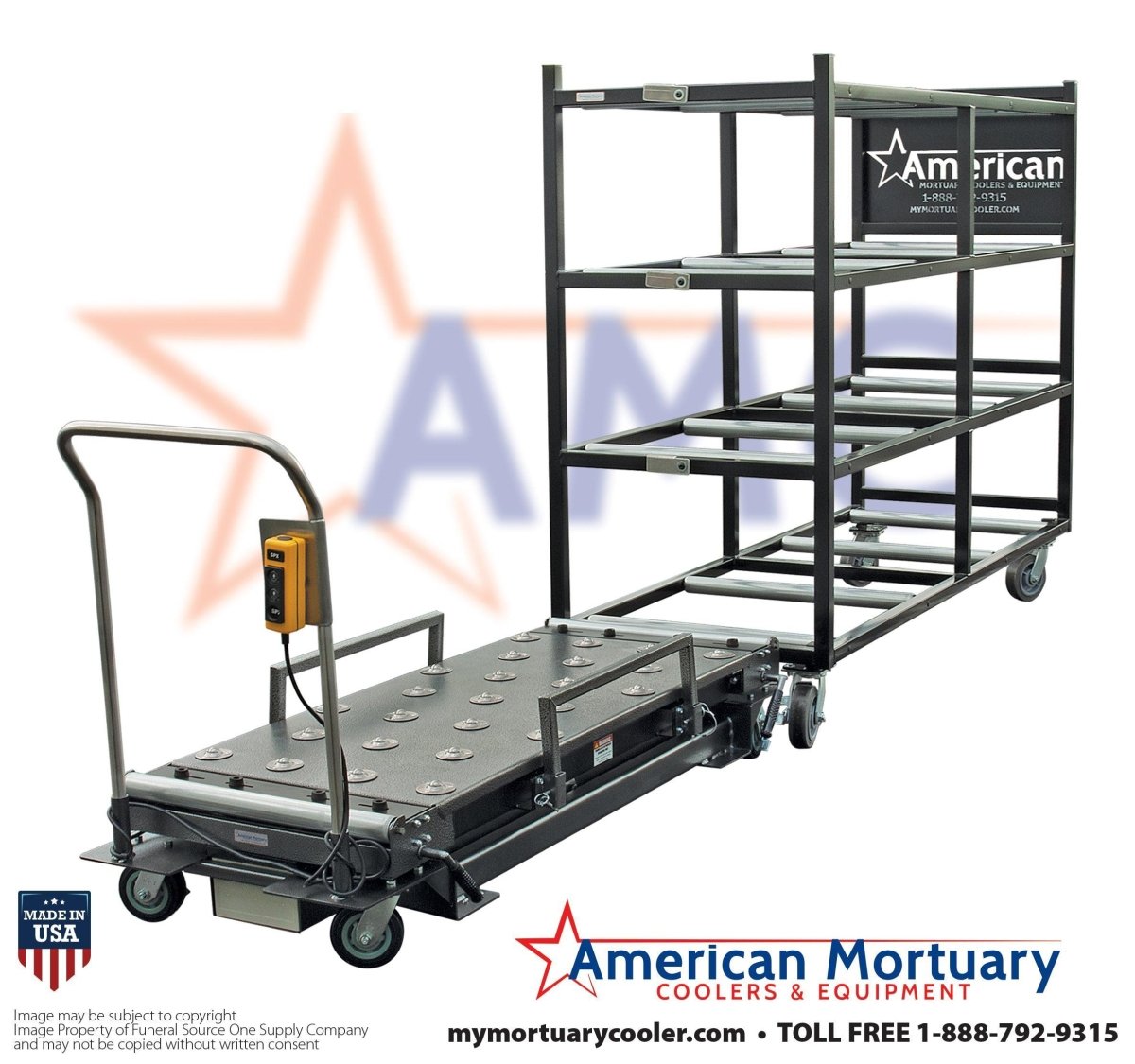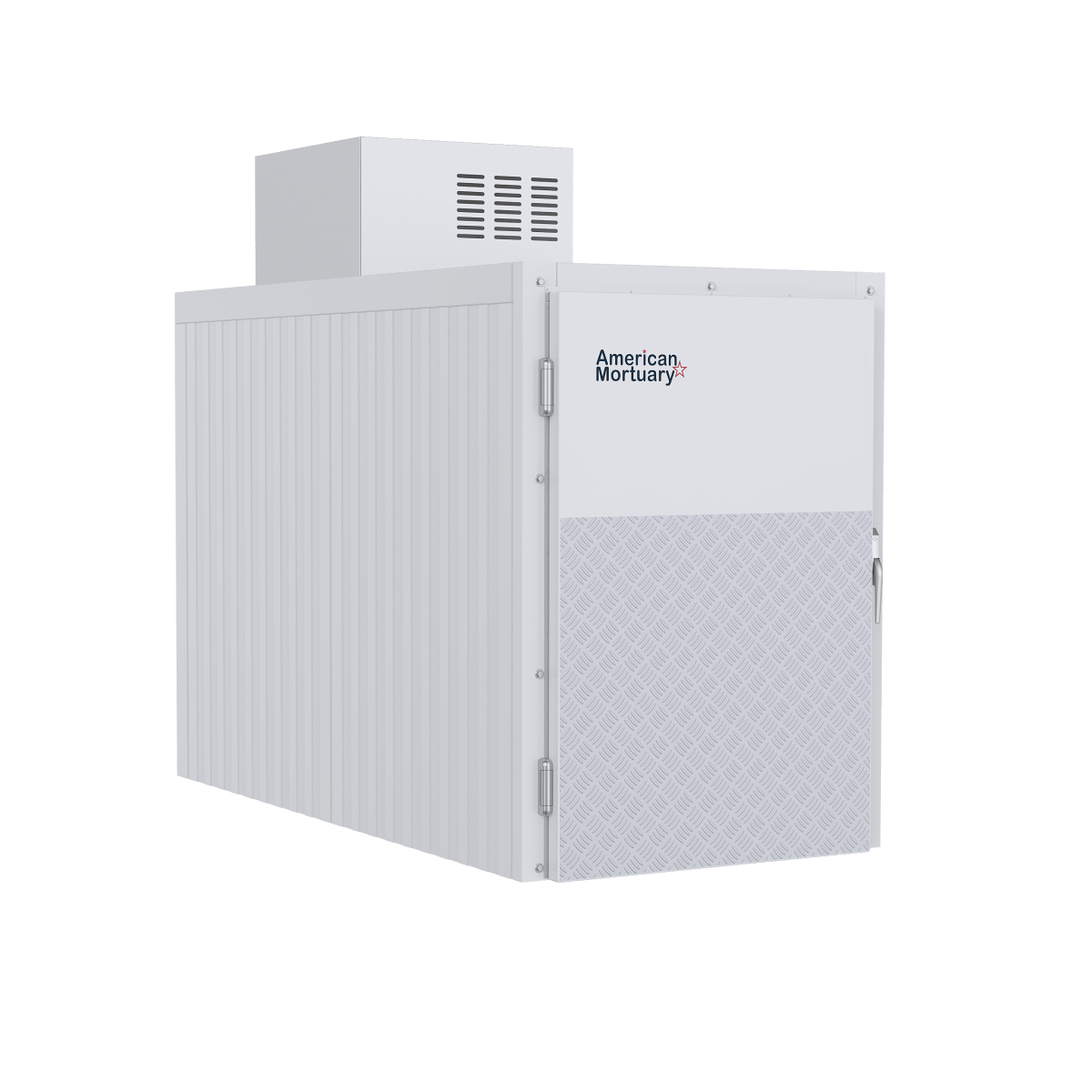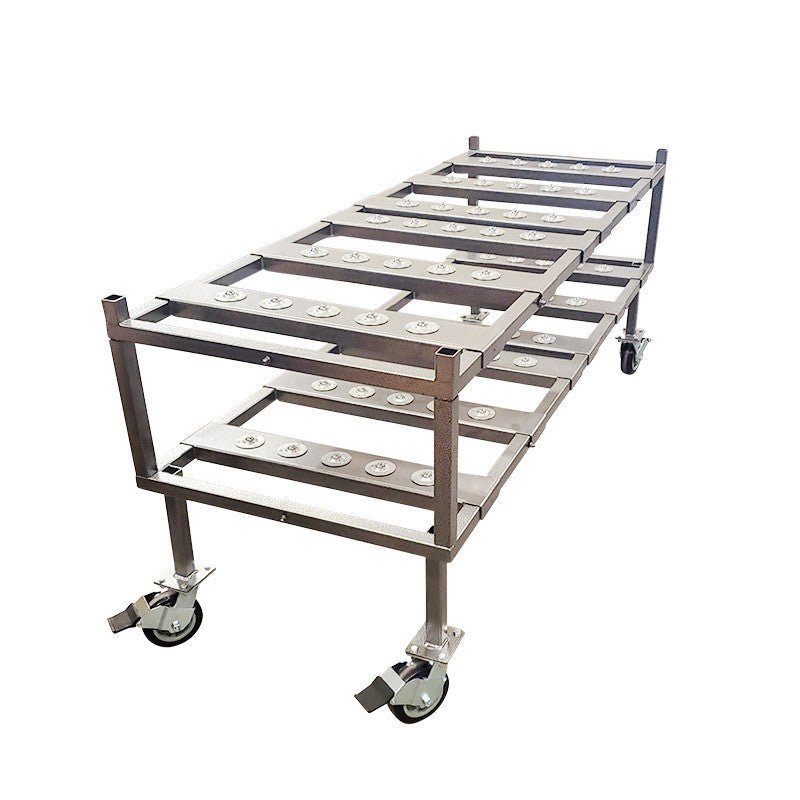Introduction: The Role of Mortuary Refrigeration in Modern Funeral Care
Welcome to the definitive Funeral Home Cooler: Complete Buyer’s Guide (2025/2026). This guide will help you understand this vital equipment. Selecting the right cooler is crucial for any funeral home, morgue, or medical facility.
For a quick overview, here are the 5 key factors to consider when choosing a funeral home cooler:
- Capacity: How many bodies can the unit store at once?
- Temperature Control: Can it maintain stable and precise temperatures for preservation?
- Energy Efficiency: How much power will it consume, and what are the long-term running costs?
- Material Quality: Is it built with durable, hygienic materials like stainless steel?
- Regulatory Compliance: Does it meet all necessary health, safety, and industry standards (e.g., OSHA, CDC)?
Funeral home coolers are more than just refrigerators. They are specialized units designed for the dignified preservation of human remains. They ensure bodies are kept in a respectful condition until services or further processes. This equipment is essential for upholding public health standards and operational efficiency.
Choosing the right cooler can seem complex. Many options exist, from small cabinet units to large walk-in models. This guide will walk you through everything you need to know. We aim to help you make a confident investment for your facility.

Types of Funeral Home Coolers: From Cabinets to Walk-Ins
When selecting the right equipment for your Funeral Home Cooler: Complete Buyer's Guide (2025/2026), understanding your options is crucial. The type of cooler you choose will depend on several key factors: your facility's daily case volume, available space, and how body storage fits into your workflow.
Think of it this way - a small family funeral home has very different needs than a busy medical examiner's office. That's why mortuary coolers come in various sizes and configurations, from compact cabinet units to spacious walk-in models.

Here's a quick comparison to help you understand the main differences:
| Feature | Walk-In Coolers | Upright/Cabinet Coolers |
|---|---|---|
| Capacity | High (4 to 12+ bodies) | Low to Medium (1 to 4 bodies) |
| Footprint | Larger, dedicated room or area required | Smaller, fits into existing prep rooms or labs |
| Accessibility | Roll-in, easy movement of stretchers | Often slide-out trays, end-opening or side-loading |
| Typical Use Case | High-volume facilities, long-term storage, medical examiners | Smaller funeral homes, temporary storage, limited space |
Upright and Cabinet Coolers
If space is at a premium in your facility, upright and cabinet coolers might be your best friends. These units pack a lot of functionality into a relatively small footprint, making them perfect for funeral homes that need to maximize every square foot.
Single-body units are the most straightforward option. They're ideal if you handle a lower volume of cases or need an extra unit for overflow situations. While some people call them "dead body freezer boxes," most funeral professionals prefer cooling over freezing since it keeps tissues more workable during preparation.
Multi-body cabinets are where things get interesting. You can find units that hold two, three, or even four bodies in a single cabinet. These clever designs make the most of vertical space - think of them as the apartment buildings of mortuary equipment. Whether you need a 2-body upright, 3-body side loading unit, or even a 4-body upright cooler, there's likely a configuration that fits your needs.
The space-saving design of these units is their biggest selling point. Because they're built vertically, they take up much less floor space than a walk-in cooler would for the same capacity. This leaves more room for other essential equipment in your prep area.
Many cabinet coolers feature end-opening doors, which is incredibly practical. You can roll a stretcher or cot directly into the unit without any awkward lifting or transferring. It's one of those features that might seem small until you're using it every day.
Side-loading models offer another approach to accessibility. Depending on how your prep room is laid out, side access might work better for your workflow. We offer various configurations, including 2-body and 3-body side loading upright coolers.
One of the most user-friendly features you'll find on advanced cabinet coolers is telescoping slide rails. These allow body trays to glide out smoothly and completely, which reduces strain on your staff and makes the process much more dignified. You can find these systems on everything from 2-body units up to 8-body telescoping slide rail coolers.
Walk-In Coolers
For facilities that handle higher volumes or need extensive storage capabilities, walk-in coolers are the gold standard. These are essentially refrigerated rooms designed specifically for mortuary use, offering best capacity and flexibility.
The high-capacity storage of walk-in units is their main advantage. You can house anywhere from four bodies up to twelve or more, depending on your needs. Whether you're looking at a 4-body, 6-body, 8-body, or 12-body configuration, these units can handle significant volume.
What makes walk-in coolers especially appealing is their customizable dimensions. Need an 8x8 foot unit? How about 8x12, 10x10, or even 8x20? These coolers can be built to fit your available space perfectly. This customization ensures you're making the most efficient use of your facility's layout.
Roll-in accessibility is another major benefit. The spacious interior means you can easily maneuver cots and stretchers in and out without tight squeezes or difficult angles. Your staff will appreciate how much smoother the transfer process becomes.
Inside walk-in coolers, body racking systems keep everything organized and secure. These specialized systems can hold multiple bodies in tiers, often with roller shelves that make handling even easier. For example, you might choose a 3-body cooler with roller shelves or step up to a 3-body XL cooler with roller shelves for additional space.
Walk-in coolers are ideal for high-volume facilities like hospitals, medical examiners' offices, and larger funeral homes. They're particularly valuable during times when mortality rates spike or when you need extended storage periods.
Choosing the right type of cooler is a foundational decision in your Funeral Home Cooler: Complete Buyer's Guide (2025/2026) journey. Take time to honestly assess your current needs and future growth plans - it'll save you headaches down the road.
Critical Features to Evaluate When Purchasing a Cooler
When you're ready to invest in a Funeral Home Cooler: Complete Buyer's Guide (2025/2026), it's easy to get overwhelmed by all the technical specifications and options. But here's the thing – this isn't just another piece of equipment for your facility. You're making a decision that directly impacts how well you can serve families during their most difficult moments while keeping your staff safe and your operations running smoothly.
Think of it this way: a quality funeral home cooler is like the foundation of a house. You might not see it every day, but everything else depends on it working perfectly. That's why we focus on four key areas that make all the difference – preservation science, long-term value, durability, and safety standards.

Construction and Material Quality
Let's start with what your cooler is actually made of – because this determines whether you'll be happy with your purchase for years to come or dealing with headaches down the road.
The stainless steel interior isn't just a nice-to-have feature; it's absolutely essential. We've seen too many facilities struggle with coolers that use inferior materials. Stainless steel doesn't absorb odors, resists corrosion, and can handle the daily cleaning and sanitizing that's crucial in your line of work. When you're dealing with biological materials, you need surfaces that won't harbor bacteria or become breeding grounds for contamination.
All-metal construction throughout the unit provides the structural integrity you need. Some manufacturers cut corners with mixed materials, but we believe in building equipment that can handle the demands of daily use without compromising safety or performance.
The insulation quality might not be glamorous, but it's where you'll see the biggest impact on your energy bills. Look for R-value ratings of at least R-28 for coolers, though we recommend R-32 or higher when possible. Here's a real example that shows why this matters: one facility upgraded from 3-inch to 4-inch insulation panels and saw their electricity costs drop by 35% in their hot, humid climate. That's money back in your pocket every month.
Non-absorbent surfaces and ease of cleaning go hand in hand. Your cooler should have smooth, accessible surfaces with minimal crevices where contaminants could hide. This isn't just about meeting regulations – it's about making your staff's job easier and ensuring every cleaning cycle is thorough and effective.
Temperature Control and Energy Efficiency
Temperature control is where the science of preservation meets the reality of your daily operations. Get this wrong, and nothing else matters.
The optimal temperature range for most funeral home applications is between 35-42°F (2-6°C), with 38°F (3.3°C) being that sweet spot we recommend to most facilities. This temperature slows decomposition effectively while keeping tissues pliable for preparation work. If you want to dive deeper into the science behind these temperatures, check out this Scientific research on corpse refrigeration.
Modern digital PID controllers are game-changers compared to older systems. These advanced controllers maintain temperatures within ±0.5°C of your setpoint. That level of precision means consistent conditions and peace of mind that your equipment is performing exactly as it should.
Humidity control happens naturally in a well-designed cooler, typically maintaining around 80-85% humidity to prevent tissue drying. You usually don't need dedicated humidity systems for standard applications.
Energy efficiency isn't just good for the environment – it's good for your bottom line. Eco-friendly refrigerants like R290 (propane), R449A, and R448A offer lower environmental impact and better efficiency. Facilities using R448A with smart defrost technology have reported 40% reductions in energy consumption.
Smart defrost cycles only run when actually needed, rather than on a fixed schedule. This keeps your temperatures more stable and reduces energy waste. Combined with LED lighting (often with motion sensors), these features add up to significant operational savings over time.
For critical facilities, dual compressors provide redundancy – if one fails, the backup takes over automatically. Some advanced systems even include heat reclamation to warm other parts of your facility and remote monitoring so you can check temperatures and receive alerts on your smartphone.
Compliance and Safety Standards
Nobody wants to deal with regulatory issues, but staying compliant protects both your facility and your staff. The good news is that choosing the right equipment makes compliance much easier.
OSHA compliance covers workplace safety essentials like secure body racking systems, proper ventilation requirements, and ergonomic design that reduces strain on your team. Our equipment is designed with these standards in mind from the ground up.
CDC guidelines for infection control emphasize the importance of stainless steel interiors, easy-to-clean surfaces, and proper temperature maintenance. These aren't just regulatory boxes to check – they're practical requirements that help you maintain a safe, hygienic environment.
UL/NSF certified components ensure electrical safety and sanitation standards are met. UL listing covers electrical safety, while NSF certification confirms that materials and design meet public health requirements. All our units use components that meet these standards.
Secure locking mechanisms protect privacy and security, while backup power compatibility ensures your cooler keeps running even during power outages. Many facilities set alarm thresholds at ±2°F (±1.1°C) to alert staff immediately if temperatures drift outside acceptable ranges.
When you evaluate these features carefully, you're not just buying equipment – you're investing in the dignity of the families you serve, the safety of your staff, and the long-term success of your facility.
Your Funeral Home Cooler: Complete Buyer’s Guide (2025/2026)
Starting on the journey to acquire a new Funeral Home Cooler: Complete Buyer’s Guide (2025/2026) is a truly significant decision for any funeral home, hospital, or morgue. It's more than just a purchase; it's an investment in your facility's heartbeat. This equipment impacts your daily operations, ensures you meet all compliance standards, and, most importantly, underpins the respectful and dignified care you provide to every family you serve. In this section, we'll walk you through the essential steps: understanding your unique needs, figuring out the true costs, and getting your space ready for installation. Our goal is to empower you to make a choice that feels confident and right for your facility.
Assessing Your Needs for the Funeral Home Cooler: Complete Buyer’s Guide (2025/2026)
Before you even start browsing models, take a moment for some honest self-reflection. A thorough assessment of your current and future needs is the secret sauce to finding the perfect cooler and avoiding any future headaches.
First up, consider your case volume analysis. How many individuals do you typically care for each week or month? Do you see seasonal surges or unexpected peaks? Understanding your average and maximum capacity needs is absolutely fundamental. This insight will tell you if a cozy single-body cabinet, a versatile multi-body upright, or a spacious walk-in cooler is the best fit for your team.
Next, it's all about available space measurement. This isn't just about the square footage on the floor! Think about the full dimensions of your prep room or designated area, including ceiling height, the width of your doorways, and any pesky obstructions like support beams. For cabinet coolers, remember to factor in enough clearance for doors to swing open fully or trays to extend smoothly. If you're eyeing a walk-in unit, consider external wall access, especially if it’s a modular design. And don't forget to reserve space for those hardworking condenser units and essential ventilation.
Then, let's talk about your workflow patterns. How do bodies typically move through your facility? Do you need easy roll-in access for stretchers? Would a side-loading or end-opening unit make your team's day-to-day tasks more efficient? Your cooler should be a seamless extension of your operations, not a bottleneck.
Looking ahead, what about your future growth potential? Are you anticipating more cases in the coming years? Investing in a slightly larger or modular system now could save you significant costs and disruptions down the road. It’s like buying shoes a size up for a growing child – a little foresight goes a long way!
Finally, ponder any customization needs you might have. Do you require specific features like specialized racking, unique door configurations (perhaps pass-through designs for discrete access), or particular floor materials? As America's trusted authority, we specialize in providing customizable solutions that are precisely custom to your operational requirements.
Navigating Costs and Total Cost of Ownership
When it comes to purchasing a cooler, the sticker price is just one piece of the puzzle. We always encourage our clients to consider the total cost of ownership (TCO). This holistic view truly reveals the long-term value of your investment.
Let's start with the initial purchase price. This can vary quite a bit depending on the size, features, and overall construction of the unit. Our research shows that prices can range significantly. For instance, a 1-body roll-in cooler might start around $5,799.00, while a larger unit like a 10' x 10' walk-in cooler could be $13,995.00, and an 8-body telescoping slide rails cooler could reach $33,525.00.
Several factors influencing cost come into play. Naturally, size and capacity are big drivers; larger units or those designed to store more bodies will generally cost more. The materials used also play a huge role. High-grade stainless steel throughout will be a pricier, but far more durable, option compared to units with only partial stainless steel or less robust materials. And, of course, custom features such as specialized racking, dual compressors for added reliability, remote monitoring capabilities, or bespoke dimensions will all contribute to the final price.
Don't forget energy consumption – this is a major ongoing cost that can really add up over time. Look for units that boast high-R-value insulation, use eco-friendly refrigerants, feature smart defrost cycles, and come equipped with energy-efficient compressors. While these features might increase the initial cost, they lead to substantial savings on your utility bills throughout the cooler's lifespan.
Consider your potential maintenance costs. Think about the expected lifespan of various components, the availability of spare parts, and how easy routine maintenance tasks will be. A well-built unit often means fewer unexpected repair bills.
It all boils down to return on investment (ROI). A reliable, efficient cooler does more than just keep things cold. It reduces operational disruptions, prevents potentially costly issues related to body preservation, and significantly improves your facility's reputation for dignified care. While these benefits might be harder to quantify with a dollar sign, they contribute immensely to a positive ROI. Investing in quality, OSHA-compliant equipment from us at Walk-In Cooler Authority means you're making a smart, long-term decision that supports your mission.
Installation Requirements and Site Preparation
You’ve chosen your perfect cooler – fantastic! But before it arrives, proper installation is absolutely critical for the long-term performance, safety, and efficiency of your new unit. Don't underestimate the importance of preparing your site.
First, let's talk about power supply needs. Mortuary coolers are serious pieces of equipment, and they require dedicated electrical circuits with the appropriate voltage and amperage. It’s always best to consult with a qualified electrician to ensure your facility's electrical infrastructure can comfortably support the new unit, especially if it’s a larger model or includes features like dual compressors.
Next up: floor reinforcement. Larger cabinet coolers, and especially walk-in units, can be incredibly heavy, even before they’re fully loaded. You need to be certain your floor can safely bear that weight. For walk-ins, a level, reinforced concrete slab is often not just recommended, but absolutely necessary.
Then there's adequate ventilation. Refrigeration units generate heat as they work. Proper ventilation in the room where the condenser unit is located is crucial. Without it, you risk overheating, which can reduce efficiency, shorten the lifespan of your compressor, and even cause premature failure.
You’ll also need to consider drainage requirements. While many modern units come with clever self-evaporating water trays for their defrost cycles, some larger walk-ins or specific prep room configurations might require floor drains for easy cleaning or as a safeguard in case of any malfunctions.
Finally, think about potential delivery access challenges. How will the cooler physically get into your building? Are your doorways wide enough? Are there any tight corners, narrow hallways, or stairs that could pose a problem? For modular walk-ins, this is often less of an issue, as they arrive in pieces. But for pre-assembled cabinet units, access can be a significant logistical hurdle. Planning ahead with our team ensures a smooth delivery and installation process, saving you time and stress.
By carefully addressing each of these considerations, you’ll be incredibly well-prepared to acquire a Funeral Home Cooler: Complete Buyer’s Guide (2025/2026) that will serve your facility effectively and reliably for many years to come.
Lifespan, Maintenance, and Warranty
A funeral home cooler represents one of the most important investments you'll make for your facility. When properly maintained, these units can serve you faithfully for decades, providing reliable preservation while maintaining the dignity your families deserve. We've seen coolers in operation for 15-20 years and beyond, still performing like new thanks to thoughtful care and quality construction.

The key to maximizing your equipment's longevity lies in understanding that your cooler is more than just a refrigerator – it's a precision instrument designed for a critical purpose. Like any sophisticated equipment, it rewards proactive care with exceptional performance and reliability.
Maintenance Best Practices for Your Funeral Home Cooler: Complete Buyer's Guide (2025/2026)
Think of maintenance as an investment in peace of mind. Regular care doesn't just extend your cooler's life – it ensures consistent performance when you need it most, helps maintain energy efficiency, and keeps you compliant with health and safety standards.
Daily attention should focus on monitoring your temperature logs and visual inspections. Your digital PID controller makes this simple, often providing automated logging and alerts. Any deviations from the optimal 35-42°F (2-6°C) range deserve immediate attention. This daily check becomes second nature and can prevent small issues from becoming major problems.
Weekly cleaning of interior and exterior surfaces maintains the hygienic environment your work demands. The beauty of stainless steel construction is how easily it cleans, but consistency matters more than intensity. A regular schedule prevents biological growth and maintains that professional appearance your families expect.
Monthly inspections should include checking door gaskets and seals for wear, cracks, or tears. These seemingly small components play a huge role in energy efficiency. Damaged seals force your compressor to work harder, driving up energy costs and potentially shortening its lifespan. Replacing worn seals is simple but incredibly effective preventative maintenance.
Quarterly professional attention to your compressor and condenser coils keeps the heart of your system running smoothly. The condenser coils, typically located at the bottom or top of your unit, accumulate dust and debris over time. Clean coils ensure optimal heat exchange, while a well-maintained compressor runs quieter and more efficiently. Inside the cooler, checking evaporator coils for excessive ice buildup helps ensure your smart defrost cycles are working properly.
Annual system reviews should include testing backup power systems and ensuring drainage systems flow freely. Your generator should seamlessly take over during power outages – testing this capability before you need it prevents unpleasant surprises during critical moments.
Choosing Your Supplier: Manufacturer vs. Reseller
Where you purchase your Funeral Home Cooler: Complete Buyer's Guide (2025/2026) significantly impacts your entire ownership experience. We strongly believe in the advantages of buying directly from the manufacturer, and here's why this matters to your long-term success.
When you work directly with us as the manufacturer, you gain access to the people who actually designed and built your equipment. This means genuine expertise when you need technical support, not a general salesperson reading from a manual. Our team understands every component, every design decision, and every operational nuance of your cooler.
Customization capabilities represent another major advantage of the direct approach. Need a unique size for your space? Specialized racking systems? Custom door configurations? As the manufacturer, we can modify designs to meet your exact needs. This flexibility simply isn't available when working through intermediaries who sell generic, one-size-fits-all solutions.
Parts availability and warranty service become straightforward when you work directly with the source. Should a component need replacement, we provide genuine parts designed specifically for your unit. This ensures compatibility and maintains your cooler's integrity. More importantly, you won't experience delays while resellers contact manufacturers on your behalf.
Cost savings often surprise our customers. By eliminating intermediary markups, direct purchasing frequently offers better value. As America's trusted authority in the mortuary and funeral supplies industry, we sell direct, enabling professionals to save big while receiving superior support.
Long-term relationships matter in this industry. When you purchase directly from us, you're not just buying equipment – you're gaining a partner invested in your success. Our physical locations across the USA (Johnson City TN, Atlanta GA, Chicago IL, Columbia SC, Dallas TX, Los Angeles, New York NY, Pittsburgh PA, and various regional offices) mean we're often closer than you think, ready to provide hands-on support when needed.
Our comprehensive warranty terms reflect our confidence in our equipment and our commitment to your success. With over 7,500 happy customers across the USA and Canada, we've built our reputation on standing behind our products and supporting our customers throughout their equipment's entire lifespan.
The choice between manufacturer and reseller ultimately comes down to whether you want a transaction or a partnership. We believe your facility deserves the expertise, customization, and support that only comes from working directly with the people who build your equipment.
Frequently Asked Questions about Funeral Home Coolers
We know you have questions, and we're here to provide clear, expert answers. It’s completely normal to have many thoughts swirling around when considering a major investment like a new Funeral Home Cooler: Complete Buyer’s Guide (2025/2026). Let’s tackle some of the most common inquiries we receive, helping you feel confident and informed.
What is the optimal temperature for a funeral home cooler?
Think of it this way: what's the perfect temperature for keeping food fresh in your fridge? It's a balance, right? For a funeral home cooler, the industry standard for optimal body preservation typically hovers between 35°F and 42°F (2°C to 6°C). Through our extensive research and hands-on experience, we’ve found that 38°F (3.3°C) is often considered the "sweet spot" by professionals in the field.
Why is this range so important? It's all about finding that perfect balance. This temperature effectively slows down the natural process of decomposition. It inhibits enzymatic processes that cause changes, helping to preserve tissue integrity and appearance. Crucially, it also ensures that the tissues remain pliable. This is super important for any subsequent preparation, embalming, or viewing procedures. Now, if you're dealing with long-term storage or forensic needs, you'd be looking at negative temperature coolers (morgue freezers), which go much colder, usually between -10°C to -20°C, or even lower for really specialized applications. But for standard funeral home operations, that 35-42°F range is your best friend.
How long can a body be stored in a cooler without embalming?
This is a very common and important question, and it speaks to the trust families place in your care. At that optimal temperature of 38°F (3.3°C), a body can typically be preserved without embalming for 3-7 days with minimal visible changes. This timeframe is generally sufficient for families to make arrangements, for loved ones to travel, or to honor religious customs. With diligent temperature management and excellent hygiene practices, this period can sometimes stretch up to two weeks. However, it’s worth noting that more noticeable changes might begin to occur after the first week.
Several factors play a role in this timeline, making each situation unique. These include:
- The deceased's condition: Things like age, body composition, and any existing medical conditions can influence how quickly changes occur.
- Cause of death: Believe it or not, the cause of death can also affect the rate of decomposition.
- Speed of refrigeration: How quickly the body is placed into the cooler after death is a big factor. The sooner, the better!
- Humidity: Maintaining the right humidity level, around 80-85%, helps prevent tissues from drying out.
While refrigeration is a powerful tool to slow decomposition, remember it doesn’t stop it completely. That’s why continuously monitoring the body's condition and your cooler’s temperature is always the best practice.
What are the key legal and regulatory standards for mortuary coolers?
Ensuring your mortuary cooler meets all the necessary legal and regulatory standards isn't just about compliance; it’s about upholding safety, hygiene, and ethical practice in your facility. We take these standards very seriously at Walk-In Cooler Authority, and we want you to understand them too.
First up, we have OSHA (Occupational Safety and Health Administration) Regulations. OSHA is all about keeping your workplace safe. For mortuary coolers, this means things like having secure body racking systems to prevent accidents, ensuring adequate ventilation in prep rooms for good air quality, and making sure the design is ergonomic to minimize strain on your staff during transfers. Proper staff training on safe procedures is also a key OSHA consideration.
Then there are the CDC (Centers for Disease Control and Prevention) Guidelines. The CDC focuses on preventing the spread of infection. For your cooler, this means the interior must be made of easily cleanable, non-porous materials like stainless steel. This stops pathogens from hiding out. Maintaining that correct temperature range we discussed earlier is also vital for keeping microbial growth in check.
You'll also hear about certifications like UL (Underwriters Laboratories) Certification. This is important for all the electrical parts of your cooler. A UL listing means those components have been rigorously tested for safety and meet specific performance standards, significantly reducing any electrical risks.
Finally, we have NSF (National Sanitation Foundation) Certification. This applies to parts related to sanitation, such as interior surfaces and shelving. NSF certification assures you that the materials and design meet strict public health and safety standards for hygiene and how easily they can be cleaned.
Beyond these big names, don't forget that local health departments and state funeral boards might have their own specific rules. These could cover things like body storage capacity, ventilation, or even emergency procedures like needing backup power. The good news? We design and build our mortuary refrigeration units to be fully OSHA and CDC compliant, and we use UL/NSF certified components. This means you can meet all these crucial standards with complete confidence, knowing you’re providing the best and safest environment for everyone.
Conclusion: Making a Confident Investment for Your Facility
Well, we've certainly covered a lot of ground together, haven't we? Choosing the right Funeral Home Cooler: Complete Buyer’s Guide (2025/2026) is genuinely one of the most significant decisions you'll make for your facility. It’s an investment that touches every part of your operation, from the dignified care you provide to your daily efficiency.
We started by looking at the different types of coolers available, from those handy, space-saving upright cabinets to the robust, high-capacity walk-ins. We then dove deep into all those critical features that truly matter. Think about it: the strength of stainless steel interiors, the insulating power of high-R-value panels, the precision of digital PID controllers, and the reassurance of eco-friendly refrigerants with smart defrost cycles. Every single detail works together to ensure gentle preservation, energy savings, and full compliance.
This isn't just about buying a piece of equipment. It's about investing in your unique ability to offer compassionate, respectful care to every family you serve. It’s about making sure your facility runs smoothly and upholding the highest standards of public health. By taking the time to carefully assess your specific needs, truly understanding the total cost of ownership, and always prioritizing quality and compliance, you're making a choice that will truly serve your community for many years to come.
Here at Walk-In Cooler Authority, we’re proud to be America's trusted authority in the mortuary and funeral supplies industry. We believe in making things straightforward and efficient for you. That's why we sell direct, bringing you OSHA-compliant mortuary refrigeration, autopsy, cremation, and funeral equipment without the extra fuss. Our goal is simple: to help professionals like you save big while still getting top-tier equipment. With over 7,500 happy customers across the USA and Canada, we're dedicated to being your reliable partner, ensuring you can serve your community with dignity and complete confidence.
Ready to take the next step or simply want to explore further? We invite you to dig even deeper into this vital topic. For more insights and to find the perfect solution for your facility, please: Explore our complete guide to choosing the right mortuary cold storage.



